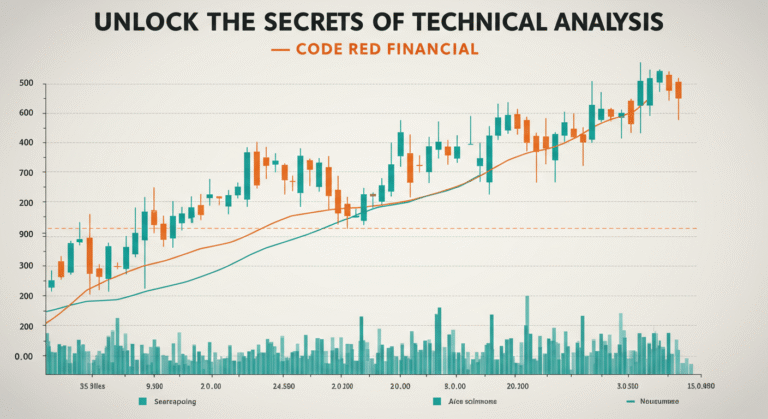
Code Red Financials – The Urgency and Strategies of Investing Later in Life
For many people, investing for retirement doesn’t become a priority until later in life. Maybe you spent your 20s and 30s paying off student loans, raising a family, or just struggling to make ends meet. Whatever the reason, if you find yourself in your 40s, 50s or beyond with little to no retirement savings, it’s code red time. The urgency of catching up on your nest egg cannot be overstated.
The cold hard facts are that the earlier you start investing for retirement, the better off you’ll be thanks to the magic of compounding interest over time. However, it’s never too late to start investing wisely. With discipline, smart strategies, and a commitment to an aggressive savings plan, you can still build a decent retirement fund even with a late start.
The Sobering Math of a Late Start
To understand the urgency, let’s look at some simple math on how much you’ll need to save per month to reach a retirement goal of $1 million by age 65, assuming a 7% annual return:
– If you start at age 25, you only need to save $380 per month
– If you start at age 35, you need to save $820 per month
– If you start at age 45, you need to save $1,920 per month
– If you start at age 55, you need to save a whopping $5,370 per month!
As you can see, the later you start, the more you have to save each month to reach the same goal. This is because you have less time for compounding to work its magic. A 25-year-old has 40 years for their money to potentially double every 10 years at a 7% return. Someone starting at 55 only has 10 years until retirement.
These numbers assume you have zero savings currently. If you’re getting a late start with some existing savings, that’s better than a blank slate, but you’ll still need to supercharge your contributions from here on out.
Strategies for Aggressive Retirement Investing
So, what can you do if you’re in your 40s, 50s or 60s and facing a code red scenario with your retirement savings? Here are some key strategies to consider:
1. Maximize Tax-Advantaged Accounts
At this stage, you need to take full advantage of tax-deferred and tax-free retirement accounts like 401(k)s, 403(b)s, IRAs, etc. For 2023, you can contribute up to $22,500 to a 401(k) if you’re under 50, or $30,000 if you’re 50 or older with catch-up contributions. For IRAs, the limits are $6,500 or $7,500 with catchups.
Every dollar you can shelter from taxes and let grow tax-deferred is crucial. If your employer offers a match on 401(k) contributions, be sure to contribute at least enough to get the full match – that’s free money.
2. Dial Up Your Risk Tolerance
With less time on the investment clock, you may need to increase your risk tolerance and allocation to stocks and stock funds compared to someone with 30 years until retirement. More stock exposure equals more volatility, but also potentially higher long-term returns.
A typical “age in bonds” asset allocation approach may be too conservative if you’re trying to build your nest egg aggressively in your last 10-15 years. Consider keeping 70-80% of your portfolio in diversified stock funds or ETFs if you have the risk tolerance.
3. Cut Expenses and Increase Savings Rate
This is obvious but critical – you need to ramp up your savings rate as high as possible by reducing discretionary expenses. Cutting out restaurant meals, vacations, new cars, etc. can free up hundreds or even thousands per month that can be redirected into retirement accounts.
Aim to save 20%, 30% or even more of your gross income if possible. Making significant lifestyle sacrifices for 10-15 years can pay huge dividends by retirement. It may mean downsizing your home, driving used cars for a while longer, or taking “staycations” instead of exotic trips.
4. Delay Retirement / Keep Working
For many people facing a late-start scenario, delaying retirement and working a few extra years can make a huge difference. Every additional year you can continue earning income is one less year your savings must cover in retirement.
Working until age 67 or even 70, if possible, can dramatically reduce the total amount you need to save. It also allows more time for compounding growth on your investments and enables delaying Social Security to receive a larger benefit.
5. Explore “Catch Up” Income Streams
In addition to your regular job income, explore ways to create extra income streams that can be directed fully into retirement accounts. This could include a side hustle, freelance gig, rental income, etc. Actively seek ways to earn “catch up” income during these critical years.
6. Downsize Housing Costs
For most people, housing is their biggest monthly expense. Downsizing your home through selling and renting, or paying off your mortgage, can free up hundreds or even thousands per month that can be re-directed into savings.
Many people are able to dramatically increase their savings rate once their monthly housing costs are reduced or eliminated in the years leading up to retirement.
7. Get Professional Financial Planning Help
If you’re facing a dire scenario with your retirement savings, it may be wise to enlist professional financial planning help to review your situation and make a detailed plan. A fee-only certified financial planner can analyze your goals, risk tolerance, and run projections to determine exactly how much you need to save going forward.
They can also provide advice on asset allocation, account types to use, tax optimization strategies, and more. The upfront cost may be well worth it to get customized, expert guidance.
The Upside of Aggressive Saving
While facing a late start on retirement savings is undoubtedly stressful, there is an upside – the more you can save aggressively in these final years, the more you may be able to maintain your desired lifestyle in retirement.
Many people are able to live comfortably on just 60-70% of their pre-retirement income due to lower taxes, no more retirement contributions, reduced housing costs, etc. But if you’re able to replace 80%, 90% or even 100%+ of your pre-retirement income through disciplined saving, your retirement years can be that much more enjoyable.
Imagine being able to travel frequently, pursue hobbies, and live an active retirement without constant worry about running out of money. While it requires making major sacrifices in the short-term, aggressive saving in the final years can pay off tremendously.
The Time is Now
If you’re in your 40s, 50s or beyond and facing a code red scenario with your retirement savings, the time to take decisive action is now. Create a plan, cut expenses to the bone, maximize retirement accounts, and explore ways to earn extra income. With discipline and sacrifice over the next 5-15 years, you can still build a decent nest egg for a comfortable retirement. The longer you wait, the harder it becomes – so get started today! Your future retired self will thank you.







